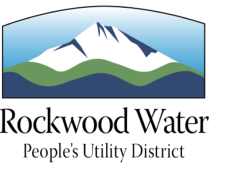What is backflow?
Backflow occurs when water moves in the opposite of its intended direction.
How does backflow occur?
Backflow can occur in one of two ways:
- (Back-siphonage): If system pressure suddenly drops due to a main break, or heavy use on one or more hydrants in an area, water can be siphoned (vacuumed) from a property just like sucking water from a glass with a straw.
- (Back-pressure): If distribution system pressure is overcome by a privately-owned apparatus, such as a pump or air compressor, water can be forced from a property back into the distribution system (e.g., blowing out an irrigation system for winter). If the PSI on an air compressor is higher than that in the distribution system, air and water can be back-pressured into the distribution system.
What are the concerns with backflow?
The greatest concerns with backflow exist with commercial and industrial applications. Water is used for manufacturing various products. In many cases, potable (drinking) water is piped directly into mixing tanks, etc. containing substances that would be harmful, or even deadly, if consumed. Rockwood Water requires backflow protection commensurate with the degree of hazard at the property line of all commercial/industrial facilities. Plumbing codes (local city jurisdiction) may also require additional backflow protection within a commercial/industrial facility.
Other more common backflow concerns are underground irrigation systems. Many underground irrigation systems are not constructed with piping rated for potable (drinking) water. Especially in older systems, the PVC piping can break down over time. This causes the quality of the disinfected potable water that enters the piping to deteriorate rapidly, which promotes bacteriological growth. In addition, contaminants such as pesticides, fertilizers, and other organic matter can enter your sprinkler system through a broken head or pipe. This water can backflow into your drinking water without a properly working, Backflow Prevention Assembly. Not only can this affect your homes potable water, but can also affect the entire distribution system.
How is backflow prevented?
Backflow is prevented by installing an approved backflow prevention assembly and having it tested annually to confirm it is working properly.
How do I know if I need a backflow prevention assembly at my residence?
In most residential cases, backflow prevention assemblies are only required if you have an underground irrigation system. Some other hard piped (permanently plumbed) examples that may require backflow protection include, but are not limited to, a swimming pool, fish pond, water features such as fountains, or a home business that uses chemicals.
Do I have to install a backflow prevention assembly if I have an underground irrigation system, or is it my choice?
If you have chosen to install an underground irrigation system, it is a requirement of Rockwood Water that you also install an approved backflow prevention assembly as a component of your system.
How and when do I get my backflow assembly tested?
All backflow assemblies must be tested according to Oregon Health Authority requirements which are:
- At the time of installation
- After any repair or relocation
- At least annually
- After a confirmed backflow incident
Backflow assemblies must be tested by a tester certified by the Oregon Health Authority to perform backflow tests. Here is a link to our Backflow page where you will find a list of the testers approved to file test results electronically for Rockwood Water and who are certified by the Oregon Health Authority (bottom of the Backflow page). Please provide your location code to your tester. Your location code can be found on the Test Required Notice you received from Rockwood Water. You can also obtain your location code by contacting the Backflow Department at 503-674-4510 or backlow@rwpud.org.
How much does a backflow test cost?
Cost can range from $30 to over $100 depending on the application. You can compare costs from different testers for your specific needs.
If Rockwood Water requires the installation and testing of backflow assemblies, why don’t they pay for it?
If a customer chooses to alter his or her private water system in a way that could potentially affect the public’s water system, it is the customer’s responsibility to take proper measures to also protect the public’s water system at his or her expense.
Why can’t I just install swing checks or atmospheric vacuum breakers (AVBs) as backflow protection on my irrigation system?
Rockwood Water requires installation of a testable device to ensure proper operation and backflow protection. AVBs and swing checks are not testable. If they cannot be tested, their effectiveness cannot be verified.
If I want to install an underground irrigation system, whom do I contact?
Installation of underground irrigation systems requires a permit (issued by the cities of Gresham, Portland, and Fairview in the District). Once a permit is acquired, the city which issued the permit can assist you with installation procedures per its plumbing code.
What if I have an underground irrigation system that is broken or I no longer use it? Do I still have to have my backflow assembly tested?
If the irrigation system is still connected to the potable water line serving your property, your backflow assembly must be tested annually.
How do I disconnect my irrigation system if I don’t use it?
You can disconnect your system quite easily if you do not plan on using it again. There is also a one-time non-use certification that can be utilized if your system is not being used for an entire year. Contact Rockwood Water PUD for more information. You can also download the form here Non Use Irrigation Certification Letter.
How can I get more information about backflow?
Call or email us! We are happy to assist you and answer any questions you may have about backflow.
Other helpful links:

